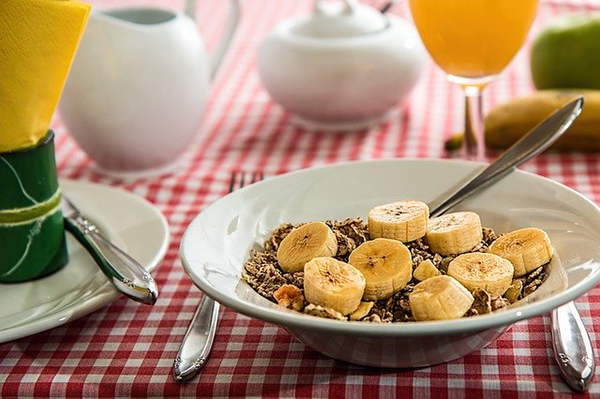Violence Prevention Week
Rene Czerwinski, from Pacific Medical Centers’ Totem Lake clinic, interviews with Q13 about violence prevention week. Rene practices behavioral medicine and is particularly interested in developing a safe space to help patients create and reach acceptance and fulfillment in life.
Teen Suicide
Dr. Alexander M. Hamling, from Pacific Medical Center’s Canyon Park Clinic interviews with Q13 about teen suicides. Dr. Hamling’s medical interests include, treating children of all ages, treating various diseases, well-child visits, childhood asthma, children’s type 1 diabetes, volunteering for international medical trips.
Flu Remedies and their Effectiveness
Dr. Gilmore was interviewed on Q13 about flu remedies and their effectiveness.
Recipe: Spring Peanut Pad Thai
 Celebrate spring with this delicious variation of the favorite noodle dish Pad Thai. This recipe uses fresh herbs like scallions and cilantro with spring asparagus and peas. Pair this with the ginger-peanut sauce, and it will shortly be a go-to meal for the family.
Celebrate spring with this delicious variation of the favorite noodle dish Pad Thai. This recipe uses fresh herbs like scallions and cilantro with spring asparagus and peas. Pair this with the ginger-peanut sauce, and it will shortly be a go-to meal for the family.
Nutrition Corner: Increasing Dietary Fiber
 Did you know that increasing your dietary fiber has positive effects on the prevention of many health complications like high cholesterol, high blood sugars, colorectal cancers and poor digestive health? Additionally, a high-fiber diet is usually lower in calories and can increase feelings of fullness after meals, which can help promote a healthy weight.
Did you know that increasing your dietary fiber has positive effects on the prevention of many health complications like high cholesterol, high blood sugars, colorectal cancers and poor digestive health? Additionally, a high-fiber diet is usually lower in calories and can increase feelings of fullness after meals, which can help promote a healthy weight.
Fiber is a type of indigestible carbohydrate found in plant foods such as fruits and vegetables, nuts and seeds, and whole-grain products. Fiber helps to bind dietary cholesterol before absorption and excrete it from the body, assisting in lowering overall cholesterol levels in the body. Also, in the large intestine, some fiber is fermented and transformed into a short-chain fatty acid, which then communicates with the liver to halt further production of cholesterol internally. A double win for your cholesterol numbers! Lastly, fiber feeds your gut’s beneficial bacteria that facilitate with proper digestion and immunity, thus reducing your risk for colon cancer and diverticulitis.
The recommended amount of fiber is 25 grams per day for women and 38 grams per day for men (or for those over the age of 51, 21 and 30 grams per day, respectively). Unfortunately, most Americans are falling far short of the recommended amount. Therefore, here are some simple substitutions that can easily add more fiber into your diet:
- Have steel cut or rolled oats with nuts and berries for breakfast instead of cereal.
- For lunch, use whole-grain bread products and add veggies such as tomatoes, cucumber and spinach to sandwiches or wraps.
- Add more vegetables or beans to casseroles and stews.
- Snack on fruits and vegetables during the day.
- Add oat bran or flour to home-baked items such as cookies and muffins and to savory dishes like meatloaf.
When increasing your fiber intake, start slow and drink plenty of fluids, especially if taking any supplemental forms of fiber.
To know how many grams are in your food, look for Dietary Fiber content on the Nutrition Facts label. It’s listed under Total Carbohydrates. A great source of fiber provides typically 5 grams or more per serving, while a good source provides 2.5 to 4.9 grams per serving.
Healthy eating!
Colon Health: Diverticulitis
 Patients suffering from a bout of diverticulitis can usually point right to it: belly pain in the lower-left abdomen. Diverticulitis happens when the wall of the colon develops small weak places that turn into pouches. These pouches, about marble sized, are called diverticula. If the diverticula tear and become infected, you experience the symptoms of diverticulitis.
Patients suffering from a bout of diverticulitis can usually point right to it: belly pain in the lower-left abdomen. Diverticulitis happens when the wall of the colon develops small weak places that turn into pouches. These pouches, about marble sized, are called diverticula. If the diverticula tear and become infected, you experience the symptoms of diverticulitis.
Symptoms of diverticulitis include:
- Belly pain, usually in the lower left side—the most common symptom
- Fever, chills
- Bloating, gas
- Diarrhea or constipation
- Nausea, sometimes vomiting
- Low appetite
If you think you have diverticulitis, call your provider, explain your symptoms and make an appointment.
Possible Role of Fiber
Medical researchers aren’t sure what causes diverticula to develop. Many adults have them, although they don’t always become a problem. A low-fiber diet may be one reason. Fiber adds bulk to your body’s stools; without that bulk, your body must work harder to push hard stools out. That pressure may cause the pouches to form.
You may be able to avoid diverticulitis by eating a high-fiber diet, drinking a healthy amount of water and exercising regularly. A diet high in fiber includes fresh fruits, vegetables, beans and whole grains. Please see our article—Nutrition Corner: Increasing Dietary Fiber.
If you have concerns about your digestive health, talk with your primary care provider, or make an appointment with a PacMed gastroenterologist. These highly trained specialists treat disorders of the digestive system.
Spring into Action
 Thank goodness spring has sprung, yes? We can stop climbing the walls, wishing for warmth and daylight, and finally get outside and MOVE those limbs!
Thank goodness spring has sprung, yes? We can stop climbing the walls, wishing for warmth and daylight, and finally get outside and MOVE those limbs!
Be sure to ease into new activity, stretching before and after and increasing your activity level with each outing. You’ll want to hydrate and fuel your body with healthy proteins and fruits and vegetables. Feeling a bit out of shape or have other health concerns? Be sure to talk with your primary care provider.
Some ideas for spring activity:
- Dig in—Now’s the perfect time to start preparing a vegetable garden. Weeding and pruning are excellent exercise too.
- Dig out—It can be hard to garden when you can’t find your tools. Choose a sunny day to clear out your shed, reorganize your deck’s closet or sweep out the garage.
- Connect—Outdoor time shouldn’t all be work, of course. Grab the family or some friends and pick a park for a walk or game of catch. Aren’t we lucky? Our region has some amazing green spaces to explore!
- Tune out—Check community boards and neighborhood gyms for outdoor classes in yoga, tai chi or “boot camp.” It’s never too early to spread your toes in the grass.
Still working out the kinks? The PacMed Physical Therapy department can help. And if you are looking for a primary care provider, check out our Primary Care team. We have nine neighborhood clinics.
A Colonoscopy Can Save Your Life
 When found early, colorectal cancer is easier to treat and highly curable. This is good news because colorectal cancer has some pretty dire statistics: it is the third leading cause of U.S. cancer deaths, and there is a 1 in 24 chance of developing it.*
When found early, colorectal cancer is easier to treat and highly curable. This is good news because colorectal cancer has some pretty dire statistics: it is the third leading cause of U.S. cancer deaths, and there is a 1 in 24 chance of developing it.*
So why take your chances and risk going undiagnosed? Proper screening can detect colorectal cancer early. It can also help eliminate pre-cancerous polyps that could become cancerous if left to grow.
Symptoms
Colorectal cancer—commonly called colon cancer—often has no symptoms. This is why screening is so important. These symptoms, however, might indicate colorectal cancer:
- Change in bowel habits
- Rectal bleeding or blood in your stool
- Persistent abdominal discomfort
- Nausea or vomiting
- Unexplained weight loss
- Chronic fatigue
Steps You Can Take
If you are over 50 or have a family history of colorectal cancer, talk to your doctor about getting screened today. The more you know, the better you can take care of your health.
A colonoscopy is one important screening test. The procedure takes just 15 to 30 minutes. During the test, a doctor looks inside the entire large intestine and into the rectum using a long, flexible, narrow tube that has a light and tiny lens on the end. The doctor can see things such as abnormal growths and inflamed tissue.
Other preventive steps include maintaining a healthy weight, being physically active and eating a healthy diet.
Learn more about colonoscopies at PacMed.You can make an appointment with one of our gastroenterologists** by calling 1.844.66.COLON (1.844.662.6566).
*Source: American Cancer Society.
**Always check with your insurance provider to find out if you need pre-authorization or to determine the level of coverage your insurance carrier provides for colonoscopy.







